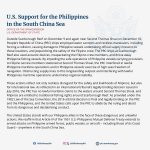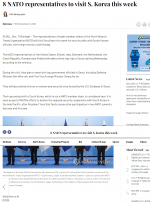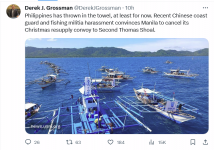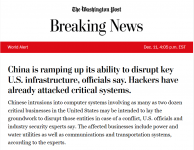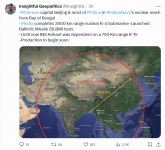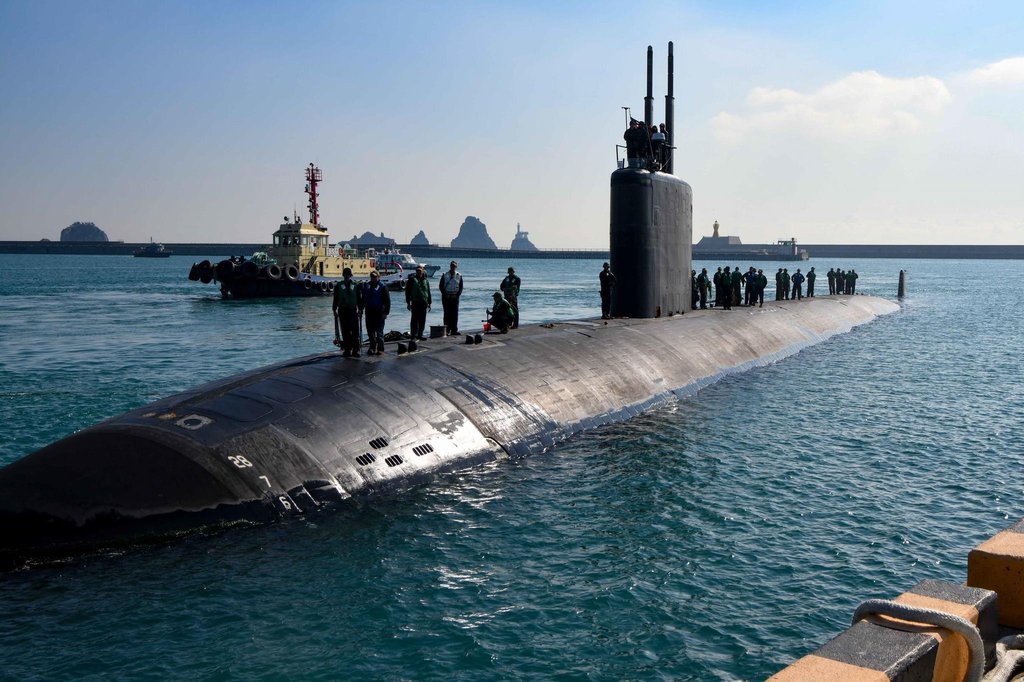defenseone.com
China is using US-allied exercises to find ‘soft targets’: US Army’s Pacific chief
Patrick Tucker
Pentagon chief Lloyd Austin is leading a summit of defense industry officials in Washington with the goal of bolstering Ukraine’s ailing military supply chains and infrastructure after nearly two years of war.
The conference is a two-day event featuring officials from the White House’s National Security Council and the Departments of Commerce, Defense, and State. Ukrainians from the Office of the President and Ministries of Defense, Strategic Industry, and Foreign Affairs are also attending.
The U.S. has already committed more than $44 billion in security aid to Ukraine since Russia’s full-scale invasion began 651 days ago. Other allies and partners have committed another $36 billion, Austin said Wednesday. To put some of that in context, “as a percentage of their GDP, more than a dozen countries have actually contributed more than the United States,” he added.
Reminder: More than 60% of America’s total Ukraine aid is spent inside the U.S., as the Washington-based American Enterprise Institute points out in its tracker,
here.
Austin: “We have already invested around $27 billion across more than 35 states for contracts to produce critical capabilities for Ukraine, including lifesaving air-defense systems, munitions, tactical vehicles, and other equipment,” the defense secretary told the audience Wednesday.
What’s new: “We’re working to make technical data packages and advanced manufacturing capabilities more readily available,” Austin said in his opening remarks. “That will let the Ukrainians produce spare parts closer to the point of need and more swiftly return vital equipment to the fight. And we must also strengthen the logistical and information-technology systems that bind all of these efforts together.”
“At the end of the day, we all benefit from the dynamic industrial bases of our global allies and partners, and that’s important far beyond Europe,” Austin said. “The whole world is watching, and we must come together to meet this moment,” he warned.
In a new first, the U.S. just unveiled war crimes charges against four Russia-affiliated military personnel on Wednesday. “The charges include torture, inhuman treatment, and unlawful confinement of a U.S. national in Ukraine following Russia’s full-scale invasion of Ukraine,” the Justice Department
said in a news release.
“Today’s indictment—the first ever under the U.S. war crimes statute—makes clear that the FBI will work with the full cooperation of international law enforcement to bring justice to the victims of these atrocities,” FBI Director Christopher Wray said. At this stage, it seems unlikely the perpetrators will be brought to justice, especially since, “If convicted, the defendants each face a maximum penalty of life in prison,” the Justice Department said. Details,
here.
Meanwhile on Capitol Hill, GOP senators shouted their way through a classified Tuesday briefing intended to focus on Ukraine. GOP lawmakers afterward said they were angry that the meeting, organized by Senate Leader Chuck Schumer, was not about border security instead.
Ukrainian President Volodymir Zelenskyy was expected to address the briefing from a secure remote connection, but he canceled at the last minute when Republican lawmakers “hijacked” the meeting “to grandstand about measures to clamp down on border crossings,” according to the
New York Times, quoting Schumer. Joint Chiefs Chairman Air Force Gen. Charles Q. Brown attended, and was on the receiving end of some pointed anger from North Dakota Republican Kevin Cramer, who accused Brown of having never even visited the border.
CNN reported Arkansas Republican Sen. Tom Cotton joined in the shouting; Cotton did not disagree.
“I hope we can all take a deep breath,” Virginia Democratic Sen. Mark Warner told CNN. “The historic consequences of abandoning Ukraine at this moment in time would haunt this country for decades. Who would ever trust our alliances again?” he asked.
Welcome to this Wednesday edition of The D Brief, brought to you by
Ben Watson with
Bradley Peniston. Share your newsletter tips, reading recommendations, or feedback for the year ahead
here. And if you’re not already subscribed, you can do that
here.
On this day in 1240, the Mongols
invaded Kyiv after a weeklong siege; they continued to rule until
about 1480.
Also from Capitol Hill: GOP Sen. Tommy Tuberville released most of his holds on officer promotions on Tuesday, largely ending a 9-month protest that failed to reduce troops’ access to abortion services but left the U.S. military increasingly shorthanded at its most senior jobs. Within hours, the Senate approved the promotion of
425 senior officers long held up by the Alabama Republican.
However, Tuberville maintained his hold on four-star nominations. A Pentagon spokesman said that means Tuberville will further delay filling 11 of the top posts in the military: the vice chiefs of the service branches; the commanders of U.S. Pacific Fleet, Pacific Air Forces, Air Combat Command, and the commanders of U.S. Northern Command, Cyber Command, and Space Command.
“In the end, this was all pointless,” President Joe Biden said in a statement. “These confirmations are long overdue, and should never have been held up in the first place. Our service members are the backbone of our country and deserve to receive the pay and promotions they have earned…Senator Tuberville, and the Republicans who stood with him, needlessly hurt hundreds of servicemembers and military families and threatened our national security – all to push a partisan agenda. I hope no one forgets what he did.”
“These holds have already dragged on needlessly for months, degrading our military readiness, and forcing far too many of our outstanding military families to put their lives on hold and endure even greater sacrifices,” Defense Secretary Lloyd Austin said in his own statement Tuesday. “While this day is long overdue, I welcome the Senate's confirmation of 425 of our highly qualified general and flag officers, who will at last be able to serve in critical positions to our national security,” he said. Read more at
Defense One.
We forgot to note this on Tuesday, but the U.S. military
says it killed five militants trying to launch a drone near Kirkuk, Iraq, on Sunday. The same day, Iraqi troops
found a fuel truck modified to launch up to 20 rockets that had fired on U.S. forces hours earlier.
Another Iraqi militia claims to have targeted U.S. and allied troops twice again Wednesday, according to the Washington Institute’s ongoing
tracker. Those attacks, featuring drones, were claimed by the Islamic Resistance in Iraq, who say they targeted troops at al-Asad and Harir.
Related reading:
U.S. spending on defense personnel is rising, but it’s mostly not in your paystub, the Congressional Budget Office reports. Total compensation is up 144% (in real terms) since 2000, thanks mostly to Veterans Administration spending, which has risen “from a small fraction of the total to about 60 percent of military compensation in the President’s 2024 budget request,” CBO writes in “
The Atlas of Military Compensation.”
You might guess that most of the increase goes to care for veterans wounded and injured in the wars in Iraq and Afghanistan, but that’s not quite right. Not only is the number of veterans declining year by year, but combat veterans make up an ever-smaller share of veterans who receive disability compensation.
So what’s happening? “A higher percentage of veterans serving after 9/11 (called Gulf War II veterans), both those who served in combat zones and those who did not, are applying for and receiving VA benefits more often and for an expanded list of covered conditions,” writes CBO, which lays out this and much more in a
five-page fact sheet with nice infographics.
Those who want a bigger U.S. military should look to build things more cheaply, suggests the
Wall Street Journal’s Greg Ip in a good
overview of the obstacles to boosting American defense production.
And lastly: China’s military spending in 2022 was roughly one-third to one-half of U.S. levels, or between $292 and $476 billion in 2022, according to a new
analysis from researchers at Brown University.
Why bring it up? “Claims that the Pentagon budget must be increased to ‘catch up’ with China don’t hold water,” said the study’s author, William Hartung of the Quincy Institute for Responsible Statecraft.
“The goal of U.S.-China policy should be cooperation, not confrontation,” Hartung advised. “There’s too much at stake to let bellicose rhetoric and mutual suspicion stand in the way of better relations between Washington and Beijing,” he added. Read more from Brown University’s
renowned Costs of War project,
here.
By the way: Three Chinese navy ships were sailing close to Somalia last week and ignored repeated distress calls from a nearby vessel as it came under attack by Somali pirates. The U.S. Navy and allied aircraft did respond, the pirates fled, and were eventually apprehended by the crew of the USS Mason, Pentagon Press Secretary Air Force Brig. Gen. Pat Ryder
told reporters last week.
“Supposedly, those [Chinese] ships are there as part of a counter-piracy mission, but they did not respond,” Ryder said. “I'm not a lawyer, but under international maritime norms and laws, if there's a vessel that's hailing a distress signal and all vessels in the vicinity should — are, required to come and help and support,” he said.
A note on mythmaking: You may recall that in 2018 China produced a flashy, CGI-heavy movie sensationalizing the actions of its military near the Horn of Africa at the outbreak of the 2015 Saudi-led war in Yemen entitled, “
Operation Red Sea.” It was China’s highest-grossing film that year. We watched it and would place it in the same hokey category as America’s 2012 cornball action caper, “Act of Valor.”
The PRC is on a “very, very dangerous path,” Gen. Charles Flynn said.

www.defenseone.com

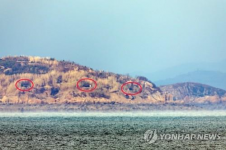
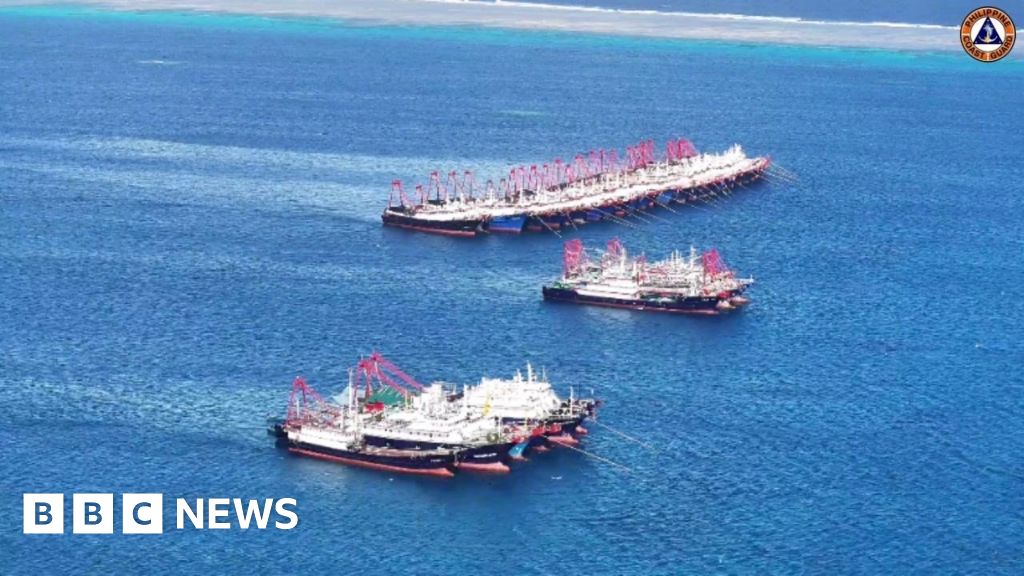




 Read on Twitter
Read on Twitter